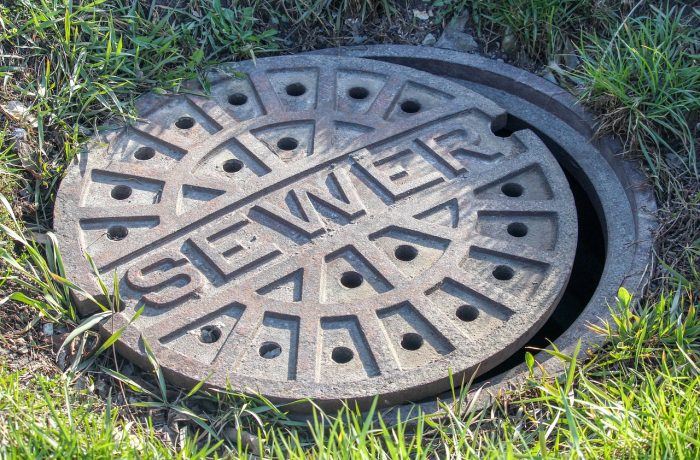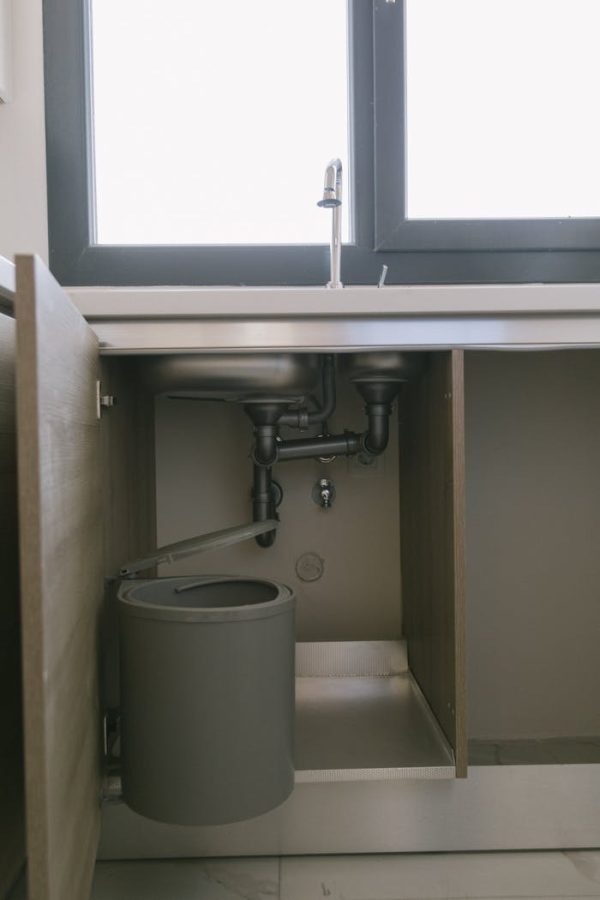
Instead of letting air into the system through walls or roofs, which is the conventional method of venting, plumbing systems can make use of Air Admittance Valves (AAVs) to stop water from being sucked out of traps. Similar to traditional vents, AAVs let air into the system through a one-way valve; however, they accomplish it without the need for an external vent stack.
How Air Admittance Valves Work
An AAV’s sealing mechanism or diaphragm opens to allow air into the system when it generates negative pressure, such as when water flows down a drain. As a result, the system is able to equalize pressure, keeping water in the traps and preventing sewage gasses from entering the structure. When the pressure returns to its usual range, the valve shuts off gas flow.
Common Applications for Air Admittance Valves
To keep sewage gases from escaping into buildings, plumbing systems often use air admittance valves. These allow air to enter drainage pipes but prevent them from escaping altogether. Some common air admittance valve applications are as follows:
- Space restrictions in kitchens or bathrooms
- Air Admittance Valves are useful in confined areas where a complete ventilation system would be difficult to install. Concealed in cabinets or under sinks allows for more design freedom.
- Retrofitting or remodeling older homes
- Air Admittance Valves are a quick and effective way to add venting to homes without having to re-pipe or make structural changes. This is ideal for homes whose present venting systems may not be up to code.
- Temporary ventilation in modular or mobile homes
- Because of their small size and portability, modular homes often use AAVs to provide ventilation in their bathrooms and kitchens, where constructing a conventional vent stack would be challenging.
- Vent stacks in multi-story buildings or apartments
- They provide a more convenient alternative to vertical vent pipes in multi-story residential buildings. Air Admittance Valves provide venting for multiple fixtures without the need for new roof penetrations. This is particularly helpful in situations where vertical vent pipes are difficult to install.
- For kitchen islands
- The absence of a nearby wall to run venting pipes is a common issue with kitchen islands. For these kinds of island sinks or dishwashers, you can install an air-admittance valve to ensure sufficient ventilation.
- Ventilation in Remote or Isolated Fixtures
- When traditional roof venting is not an option or is too onerous, air-admittance valves are a common solution. Plumbing fixtures, such as toilets and sinks, are located far from the main plumbing stacks in a building.
- Preventing water seal loss in traps
- Air Admittance Valves keep the pressure in the drainage system at a healthy level. This stops water from escaping the traps (the U-shaped section of a pipe) and causing sewage odors to infiltrate homes.
When it comes to common plumbing venting problems, these valves provide an efficient, practical, and space-saving answer. Before installing them, make sure to check the regulations in your area, as there may be restrictions on their use according to plumbing codes.
 Benefits of Air Admittance Valves
Benefits of Air Admittance Valves
When installed in plumbing systems as an alternative to more traditional venting methods, air admittance valves provide a number of advantages. These are the main advantages:
- Versatility
- From smaller home systems to larger commercial installations, they have a wide range of potential uses. Air Admittance Valves are compatible with a wide range of plumbing equipment.
- Ecological Benefit
- Air admittance valve installation uses fewer materials than typical venting, resulting in less environmental impact. Using fewer pipes and fittings results in reduced resource consumption and waste.
- Cost-Effective
- Air admission valve installations are more cost-effective than typical venting systems. This is because of the lower material prices (less piping) and labor expenses (simpler installations). Because of this, they are a wonderful option for both renovations and brand-new installs.
- Reduced Risk of Roof Leaks
- There’s always the chance of roof leaks with typical venting systems. This occurs when pipes are installed through holes in the roof. By removing the requirement to penetrate the roof, air admittance valves reduce the risk of water infiltration and leaks.
- Improved Aesthetic Flexibility
- Air-admittance valves improve the aesthetics of buildings by hiding the vent pipes that would otherwise stick out from above ground. Renovating a historical building is especially beneficial as it preserves the original architecture.
- Easy to Installation
- They simplify installation by allowing placement inside walls or directly beneath sinks. This is especially useful in confined areas where installing standard venting could be difficult, if not impossible.
- Fast Response to Air Pressure
- When air admittance valves detect a decrease in pressure, they open, allowing air into the system and restoring pressure equilibrium. The valve closes to stop the escape of toxic gases as soon as the pressure returns to normal. This rapid reaction aids in keeping the drainage system operating properly.
- Lower Maintenance
- These units typically last for years without major wear and tear and require very little maintenance. They reduce the number of vent inspections and cleanings.
- Space-Saving Design
- These systems provide more design flexibility for plumbing systems. This is particularly useful in locations where running standard vent pipes to the roof could be too dangerous or impracticable. Because they cut down on venting through ceilings and walls, they help conserve both space and material.
- Prevents Trap Siphoning
- The purpose of air admittance valves is to prevent negative pressure from entering plumbing systems. That way, the water traps won’t lose their seal and let sewage gasses into homes—something that can happen if the water pressure drops too low.
Limitations of Air Admittance Valves
Airflow Limitations
Because of their limited gas-venting capability, AAVs cannot substitute venting in situations requiring positive pressure discharge.
Limited Use
It’s not always possible to use air-admitted Admittance valves instead of venting. Conventional venting may still be necessary for expansive systems with substantial drainage requirements.
Local Code Restrictions
Some authorities favor traditional venting for reliability, which is why they don’t allow AAVs. Prior to installation, it is crucial to verify the applicable building codes in your area.
Mechanical Failure
Due to their mechanical nature, AAVs are susceptible to normal wear and tear and even failure, necessitating replacement or repair.
Disadvantages of Traditional Vents
Traditional vents, commonly used in HVAC systems, have a few drawbacks compared to more traditional options like smart or energy-efficient ventilation systems. Here are a few important drawbacks:
Noise Issues
- In normally peaceful areas, such as bedrooms or offices, the sound of conventional vents can be disruptive due to poorly constructed or maintained ducting.
Lack of customization
- One major drawback is that you usually can’t adjust the airflow or temperature to certain zones or rooms. Smart vents are one modern solution that can adapt to different temperatures and occupancy levels, something that older systems couldn’t do.
Higher energy costs
- The design of standard vents does not prioritize energy conservation. Because the HVAC system requires more effort to keep the interior at a constant temperature, it can increase energy consumption.
- Energy loss occurs when conditioned air escapes before it reaches its intended locations due to the prevalence of ducting leaks.
Limited Automation
- Traditional vents necessitate human intervention to regulate airflow, in contrast to smart systems, which can do so automatically in response to environmental factors such as temperature and user preferences.
- They are less convenient and provide you less control because they don’t work with home automation systems.
Poor air quality control
- While more and more modern ventilation alternatives have sophisticated purification or filtering systems, traditional vents do not. They don’t do anything to clean the air of allergens, dust, and other airborne contaminants.
- Indoor air quality can be poor due to an absence of humidity management, which can cause health problems or discomfort.
Duct problems and maintenance
- Extensive ductwork is a common component of traditional vent systems; keeping it clean and free of mildew and dust demands ongoing maintenance and cleaning.
- Duct leaks, obstructions, or cracks can severely affect the system’s efficiency and performance.
Inefficiency
- Air distribution via traditional vents is not always uniform. As a result, different parts of the room may be unevenly heated or cooled.
- They cause energy waste and cost increases due to over- or under-ventilation in the absence of sophisticated control mechanisms.
Conclusion
To sum up, when traditional vent stacks aren’t an option, air admittance valves are a convenient and affordable way to vent plumbing systems. Nevertheless, make sure you follow all local building codes and think about the possible downsides.
